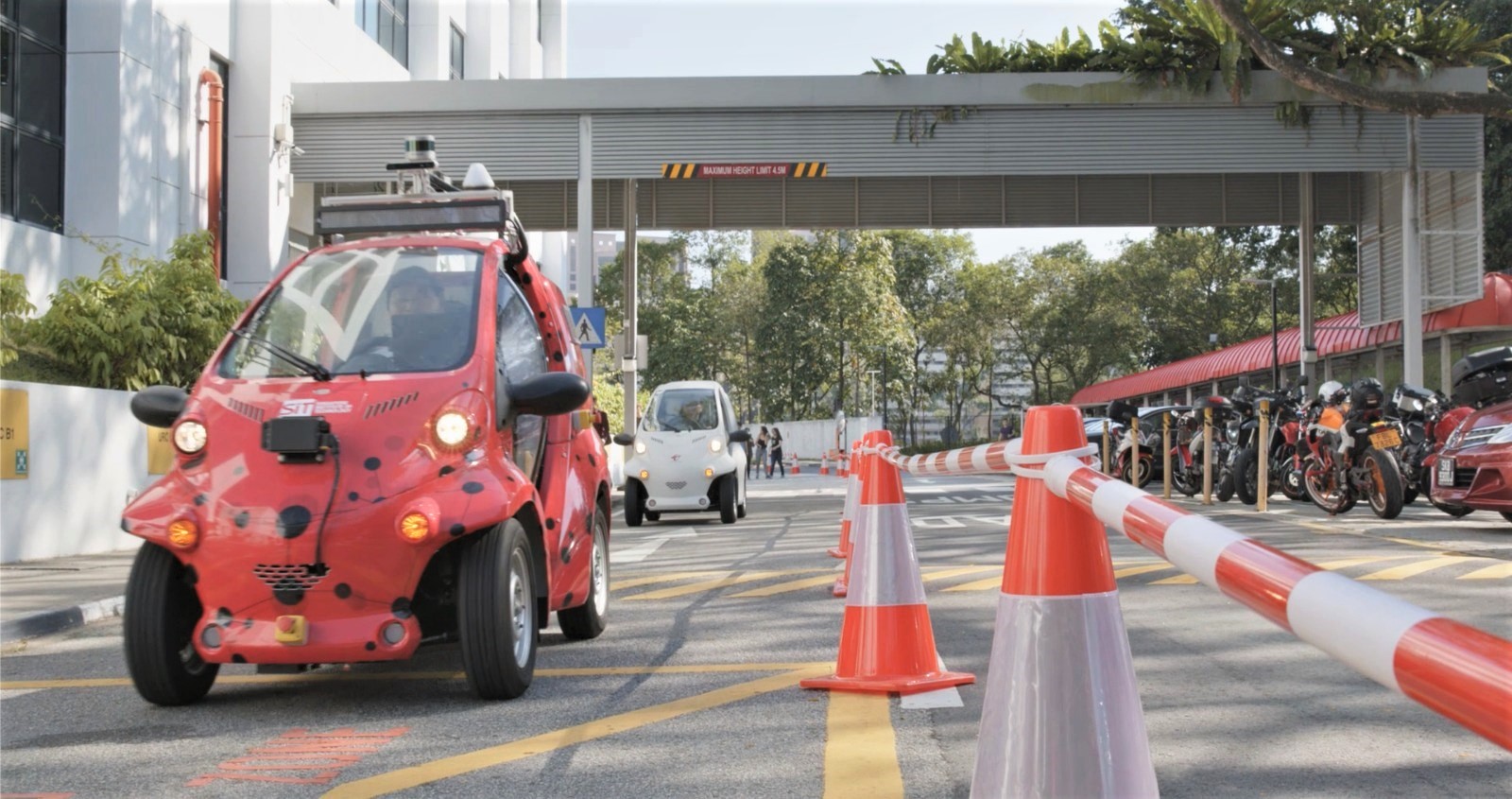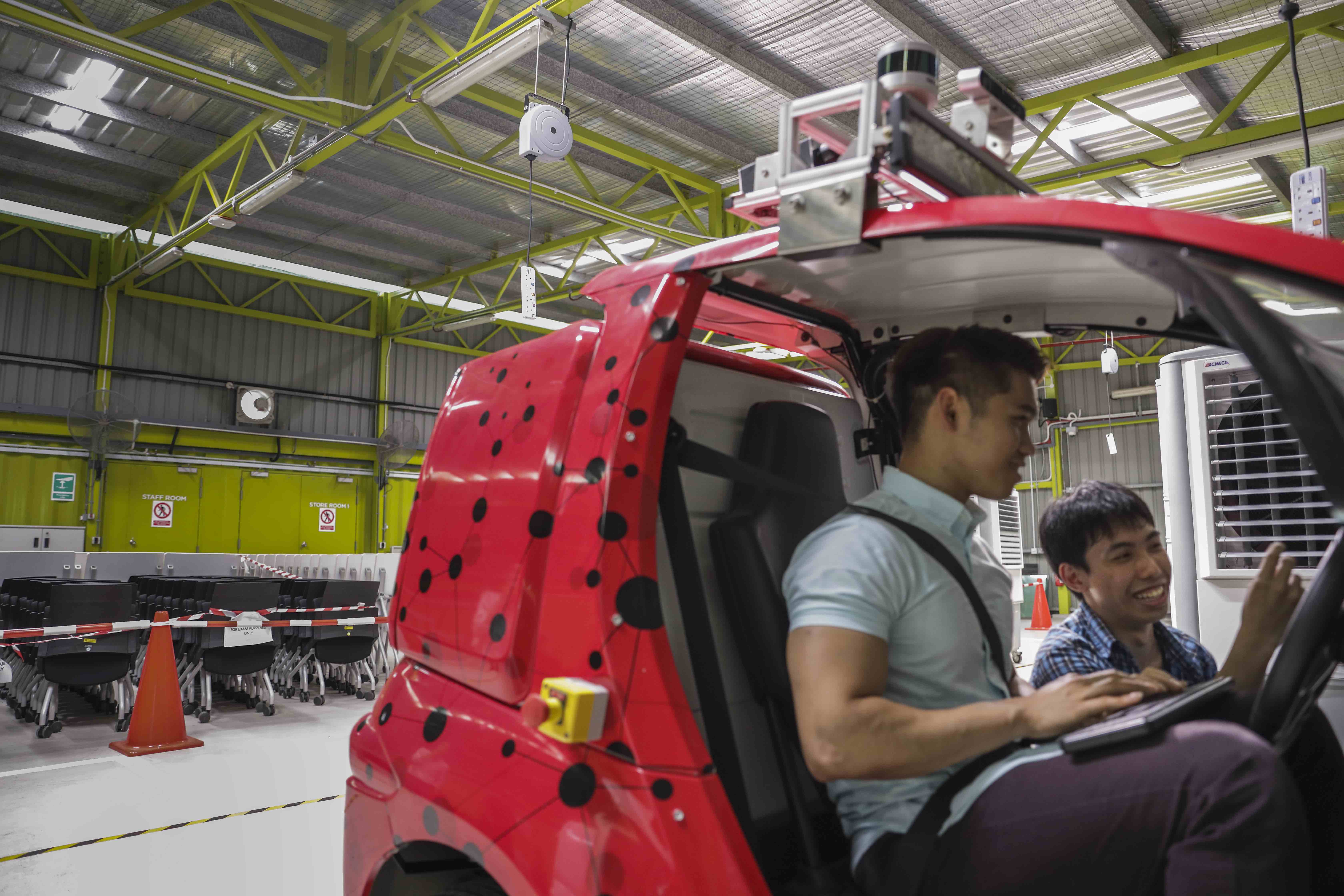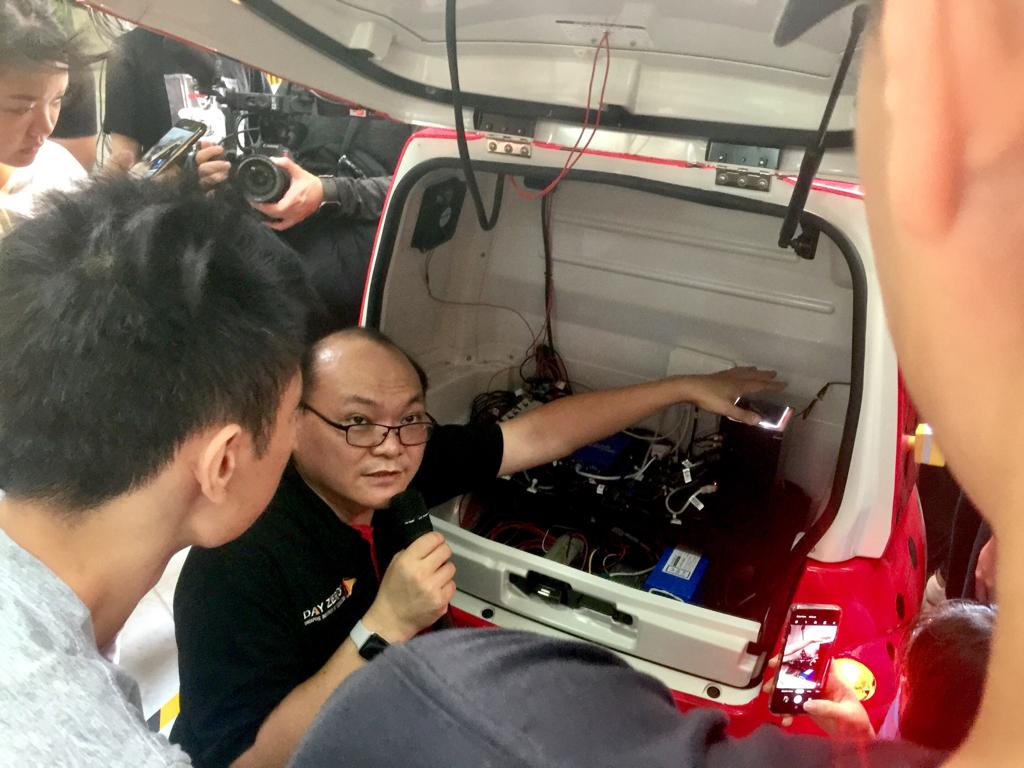True to SIT’s status as Singapore’s university of applied learning, an electric autonomous vehicle (EAV) has been deployed for the primary purpose of bringing the technology up close and personal to students reading the Bachelor of Engineering with Honours in Telematics (Intelligent Transportation Systems Engineering) programme.
Aptly named as The S.E.A.D. Car, which stands for The SIT Electric Autonomous Driving Car, it has started making its rounds on SIT@Dover campus grounds, much to the delight of the SIT community.

The S.E.A.D. Car is set to be a mainstay at SIT@Dover
Developed in close partnership with SIT industry partner SingPilot, The S.E.A.D. Car consists of input by SITizens through their Integrated Work Study Programme (IWSP) with the company. Year 3 students Boris Khoo and Alvin Lim Jing Yik had the opportunity to contribute to the development of the vehicle by creating a modular design for the EAV’s vehicular controls, including functions such as the acceleration, brakes and gear system, among others.

Students getting up close and personal with the EAV to learn about autonomous technology
The EAV enhances students' laboratory experience to build capabilities in the autonomous domain. It is also a prime example of how students can 'get their hands dirty' with technology that is relevant to modules focused on location sensors, inter-car connectivity and other intelligent automotive systems-related subjects.

Mr Dan Chia, Senior Lecturer, SIT, taking students through the EAV's various functions in detail
"The future of mobility rests in the development of smart technology of today. At SIT, we are driven to pave the way forward together with our students, the innovators of tomorrow. The S.E.A.D. Car represents our commitment to exploring the potential in transforming our transport system in smart nation Singapore," said Associate Professor Zheng Jianxin, Programme Director, BEng (Hons) in Telematics (ITS Engineering).
Acting as a test bed for a complete smart transportation network, the EAV will also complement the installation of Smart Lamp Posts around the campus, driving research on the communication between autonomous vehicles and infrastructure. These lamp posts can be used to direct driverless cars, catch speeding e-scooters and even analyse faces, down to race, gender and age.
Successful runs of the EAV will ascertain deployment of more EAVs in the future SIT@Punggol campus.
![[FA] SIT One SITizen Alumni Initiative_Web banner_1244px x 688px.jpg](/sites/default/files/2024-12/%5BFA%5D%20%20SIT%20One%20SITizen%20Alumni%20Initiative_Web%20banner_1244px%20x%20688px.jpg)


